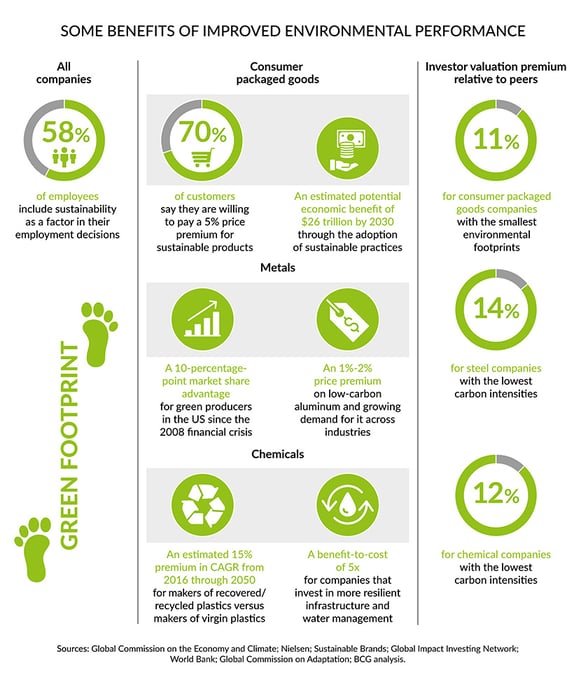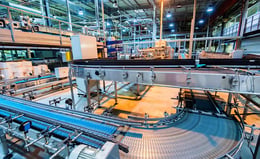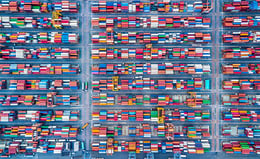4 Ways S&OP can Support Your Sustainability Goals in 2022
Robin Hornung - March 01, 2022

Where meeting sustainability goals was once a choice, global regulations are now shifting to require companies to adapt their supply chain to meet key environmental metrics. To achieve these metrics, companies can turn to a sustainability framework coined over 25 years ago: the triple bottom line. Within this framework, companies measure performance along the axis of profits, people, and the planet.
The shift in regulations also reflects the growing consumer demand for sustainable products and mindful company practices. Now more than ever, customers want transparency in how their products are manufactured and a better understanding of how companies are working to mitigate the ongoing climate crisis.
The good news is that optimizing both profit and environmental stewardship can go hand in hand. Companies can now synergistically approach milestones in both areas instead of viewing profit and sustainability as distinct goals. Data-driven S&OP is just one way companies can maximize their profit and minimize their carbon footprint.

4 Ways S&OP Can Improve Supply Chain Sustainability
1. Reduce Excess Waste in the Supply Chain
By modeling and following data-driven ideal inventory levels, companies can ensure their purchases reflect their current production and projected sales, helping to reduce excess product and avoid shortages. Companies can model supply and demand using their own historical data and use advanced data analytics to support intelligent ordering. Smarter orders mean smarter manufacturing and an overall reduction in waste in the supply chain.
2. Increase Local Sourcing of Materials
Within S&OP software, companies can also analyze how locally sourcing a product will impact both profit margins and their carbon footprint. A locally sourced product can reduce shipping costs, lower emissions, and meet customer demands for more sustainable products. On the flipside, S&OP software can also help companies model how purchasing multiple products from the same supplier can support sustainability, even if the supplier is overseas.
3. Promote Sustainability-Focused Products
With S&OP software, companies can better analyze sales trends related to sustainable products and develop strategies to improve their marketing. For example, an automotive company can use advanced data analytics to gain insights into the sale of hybrid or electric vehicles. Then, the company can develop sales plans targeted to promote their purchase. Increasing the sale of greener vehicles can, in turn, help the automotive company meet sustainability regulations across global markets.
4, Optimize Transportation Routes
Other software tools can complement S&OP to support company sustainability. With transportation solutions, shipping and delivery routes can be optimized to minimize emissions and ensure vehicles travel with maximal loads. Optimization tools can help companies ensure the transportation of their products reduces labour and shipping costs, along with emissions, for a holistic solution.
flexis S&OP Solution Supports Enterprise Sustainability
flexis’ end-to-end software solutions help companies optimize every step of their supply chain planning. Whether executives are looking for data-driven insights for S&OP or intelligent optimization of transportation routes, flexis provides custom, enterprise-wide solutions. To help companies make informed decisions, flexis also offers unlimited “sandboxes:” copies of their software solutions that let companies model changes before they are executed. With these sandboxes, a company can model how changes in the supply chain will impact both sustainability and revenue before implementation.
flexis’ solutions helped a Japanese automobile manufacturer to create a more sustainable supply chain. Their software solutions led to a 30% reduction in lead times from production to sales and a 10% reduction in logistics costs. Not only did the company save big, but they also minimized waste in their supply chain to reduce their carbon footprint and support their triple bottom line.
Click below for more information
LATEST POSTS
- Understand Why Production Planning Needs Specialized Solutions
- Understand Circular Economy in The Manufacturing Industry
- How Can Industry 4.0 IT Integration Be Achieved Smoothly?
- The Significance of Order Sequencing in Discrete Manufacturing
- How to improve your Supply Chain Management: The Power of Control Towers



